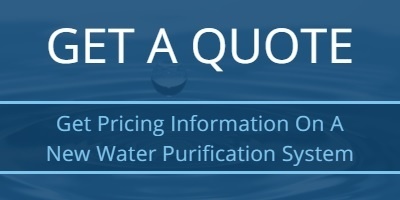
Price is often the first question we are asked when it comes to enquiries about DI water systems, so we wanted to address the issue in this article. Before we get into specifics we have to be clear that overall cost, operational expenses, potential savings, ROI etc. will vary on a case-by-case basis.
Bespoke Versus Standard Solutions
At Wychwood Water we specialise in bespoke water solutions, meaning that no two quotes are likely to be the same. When you approach us with a problem, our job is to help you find the most efficient water solutions that deliver the greatest value within your budget. An off-the-shelf quote won’t do this – you are likely to get a mix of generalised or unsustainable promises that will only lead to disappointment, and you may miss out on some key savings. During our initial consultation we try and find out as much about your water requirements, current setup and present costs as possible. This lets us accurately calculate how your processes can be improved, how much this will cost and what returns you are likely to see.
Capital Investment
With this proviso in mind, let’s look at the capital investment required to purchase the asset itself. Compared to other types of water purification plant, such as reverse osmosis, deionisation equipment is comparatively cheap. A small, portable system suitable for deionisation of battery water, for instance, can cost as little as £350. This is the lower end of the market, of course. The larger the system, the more expensive it will be. A more realistic estimate for a full-scale commercial DI system is £22,000-£30,000. Single bed systems are generally cheaper than two bed setups, with CEDI (Continual Electro Deionisation) systems costing more than those using chemically charged resins, although they cost less to run.
Within the market itself there is huge variation in cost and quality. It is reasonable to expect to pay more for a system that achieves a higher level of resistivity. The industry average resistivity for DI systems is around 10 megaohms, although some systems are far more efficient, achieving 18 megaohms resistivity or greater. Always shop around and be sure of the performance characteristics of a system before making a purchase.
Operational Costs & Potential Savings
A large commercial DI system may cost £3000-£5000 a year to run. Costs include power, maintenance and chemicals. This may seem like a lot, but it is small change when compared to the annual expense of purchasing tanks of deionised water – which can easily cost a manufacturing facility £50,000 or more each year.
Deionisation & Reverse Osmosis
Let’s look at this another way: in terms of deionisation cost per gallon. Depending on the TDS of the feed water, deionisation might cost 25p to 40p per gallon. However, when the feed water is pre-treated with reverse osmosis first, the typical costs plummet to a typical 1p to 2p per gallon – an enormous saving.
This is why we rarely present deionisation as a straight alternative to reverse osmosis or other systems. The best value can be gained when they are used in conjunction. The ideal setup will, of course, depend on the space you have available, your access to capital and the needs of your business, but there are great savings to be had when water treatment is examined through the lens of your business goals.
So in answer to our question: yes, investing in a DI system is well worth the money. If you currently purchase deionised water, the savings will be immediately apparent, giving you a positive ROI on even a complex system within a few years.
To find out more about deionisation, please take a look at our Ultimate Guide To Industrial Deionisation Systems, a free e-book that can be downloaded by clicking here.










 We are a specialist independent company involved in water purification and water treatment technologies
We are a specialist independent company involved in water purification and water treatment technologies


